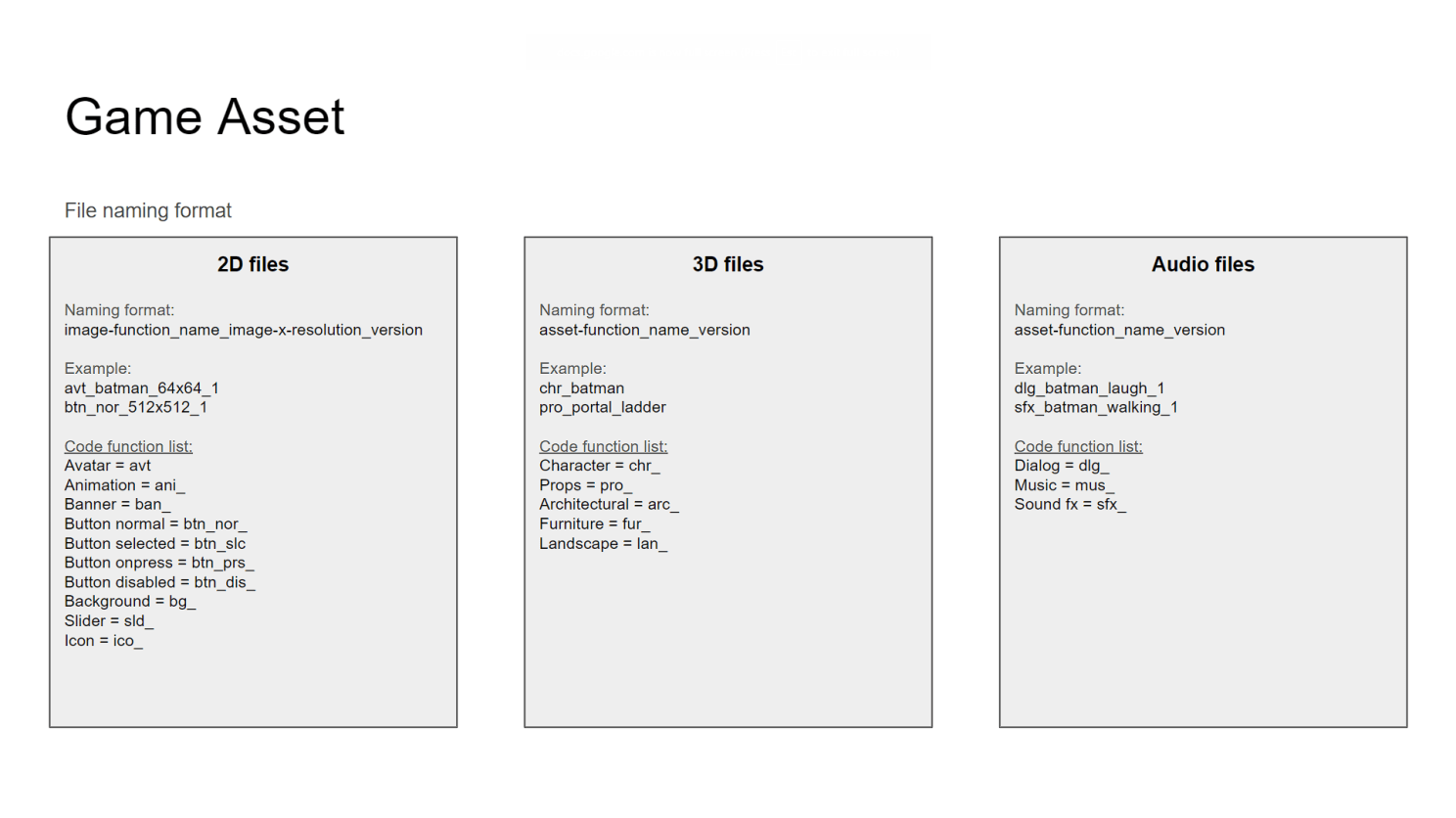Function
In game development, team members often come from different backgrounds and may use varying formats when creating and naming assets. Without a standardized naming convention, inconsistencies can cause confusion, slow down production, and create unnecessary bottlenecks during asset implementation.
Problem
Let’s say two game artists are tasked with creating prop assets. One names a file “house” in English, while the other names it “rumah” in Indonesian. Without a shared naming system, it’s unclear whether these refer to the same asset, different versions, or where each should be placed. Now scale that problem to a library of thousands of assets. Verifying each one manually would take hours or even days wasting valuable development time.
Solution
The key is to define and enforce a clear naming convention from the start. A good naming system allows any team member to understand an asset’s type, function, and purpose at a glance without opening the file.
For example, a UI asset named btn_nor_play_1 immediately communicates that it’s a button (btn), in its normal state (nor), associated with the play action (play), and it’s version 1. This level of clarity boosts productivity, minimizes miscommunication, and keeps pipelines running smoothly.
See the image below for a visual example of how this standard can be applied.
